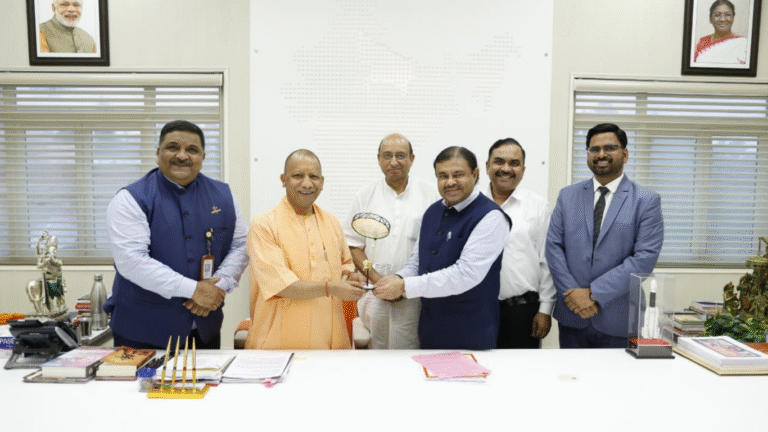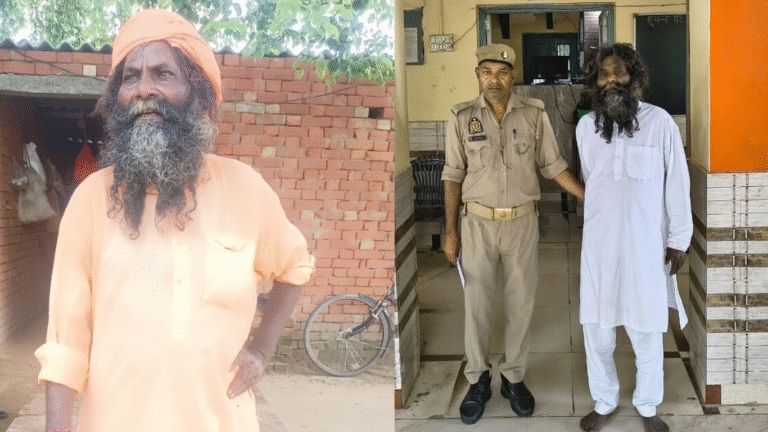
Fatehpur, located in central Uttar Pradesh, is a district rich in history and grounded in rural life. It lies between the two major cities of Kanpur and Prayagraj, making it an important link in the region. Despite its quiet presence, Fatehpur plays a meaningful role in the cultural and social map of the state.
This district is known for its hardworking farmers, traditional values, and peaceful atmosphere. Life moves at a slower pace here, with early mornings on farms, weekly village markets, and festivals celebrated with community spirit. From the Ganga River to its green farmlands, Fatehpur’s environment is as humble as it is beautiful.
Today, it continues to evolve—improving its education, infrastructure, and public services—yet remains connected to its roots. Whether you are from a village or visiting from a city, Fatehpur offers a refreshing look at real Indian life.
History of Fatehpur – From Ancient Times to Today
Fatehpur has a long and meaningful history. The district has been mentioned in ancient texts and is believed to have been part of the Maurya Empire, later seeing the rise of Gupta and Mughal rulers. The name “Fatehpur” itself is thought to have come from a military victory, meaning “City of Victory.”
During the 1857 First War of Independence, Fatehpur played a notable role. The Bawani Imli, a sacred tree where 52 freedom fighters were hanged by the British, still stands as a symbol of bravery. Every year, people pay tribute to these martyrs, keeping the memory of their sacrifice alive.
Old temples, Mughal-era mosques, and colonial structures still exist in the district, especially in areas like Bindki and Khaga. These landmarks quietly tell stories of rulers, revolts, and cultural shifts through time. The local population takes pride in this history, and traditional folk songs often mention historical tales and legendary warriors.
Geography and Location of Fatehpur
Geographically, Fatehpur lies in the fertile Doab region, the land between the Ganga and Yamuna rivers. This makes it rich for farming and full of natural beauty. The district is mostly flat with wide fields, small water bodies, and village roads lined with trees.
Fatehpur shares borders with Kanpur Dehat, Raebareli, Kaushambi, Prayagraj, and Banda districts. It stretches over an area of around 4,152 square kilometers and includes several tehsils and blocks, with Fatehpur town as its headquarters.
The climate is moderate to hot, with summer temperatures often crossing 40°C, while winters are cool and dry. The monsoon season brings much-needed rainfall that helps grow key crops like rice, wheat, and pulses.
Education and Development in the District
Over the years, Fatehpur has slowly made progress in the field of education. While earlier, most children studied in village schools, today many are attending English-medium schools, coaching centers, and higher secondary institutions. The number of government and private schools is growing in towns like Fatehpur, Bindki, and Khaga.
Colleges like Govt. Degree College Fatehpur, Sarojini Naidu Mahila Mahavidyalaya, and other technical institutes provide higher education in the district. Students from small villages now dream bigger—preparing for UPSC, SSC, banking, and teaching jobs.
The government is also working to improve facilities through programs like Mid-Day Meal, Digital India in schools, and Beti Bachao Beti Padhao. While challenges like dropout rates and infrastructure gaps remain, parents today understand the value of education more than ever before.
Transport and Connectivity
Fatehpur is well-connected by road and rail. The Howrah–Delhi railway line passes through Fatehpur, making train travel to major cities quite easy. The Fatehpur railway station and nearby smaller stations like Bindki Road and Khaga serve the local population.
The National Highway 19 (old NH-2) connects the district to Kanpur and Prayagraj, allowing for smooth bus and car travel. Local transport includes jeeps, rickshaws, and tempos which run frequently, especially between rural and town areas.
The district is still waiting for an airport connection, but nearby cities like Kanpur or Prayagraj serve that purpose for air travel needs.
Local Culture and Everyday Life in Fatehpur
Fatehpur’s culture is shaped by its deep village traditions. People live in joint families, follow customs with pride, and celebrate every festival—be it Holi, Eid, Diwali, or Chhath—with full energy. Marriage celebrations, harvest festivals, and temple fairs bring everyone together in joy and prayer.
Food in Fatehpur is simple but tasty—rotis made of wheat, fresh vegetables, chutneys, and sweets like balushahi and malpua. Weekly markets, also called haats, are where locals buy and sell produce, clothes, and home items while catching up on village news.
In the evening, you’ll find elders sitting outside homes sharing stories, while children play gilli-danda or cricket in open fields. This close-knit, slow-paced life is what gives Fatehpur its peaceful and warm character.
Final Thoughts
Fatehpur, Uttar Pradesh, is a land of calm strength, silent history, and growing dreams. Its people live simple lives but carry deep pride in their culture and past. With steady steps in education and connectivity, the district is slowly moving forward without losing its values.
Whether you are from Fatehpur or just passing by, take a moment to look around—at the banyan trees, the farmers in the field, the temple bells ringing in the morning—and you’ll feel the soul of real India right here.



